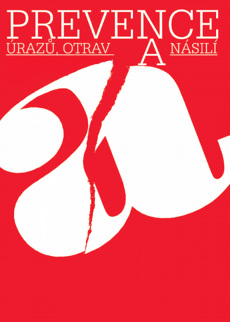PROBLEMATIKA AGRESIVNÍHO CHOVÁNÍ KLIENTŮ DOMOVŮ PRO SENIORY
PROBLEMS OF AGGRESSIVE BEHAVIOUR OF CLIENTS IN SENIORS´ HOMES
Radka Bužgová1, Kateřina Ivanová2
1Ostravská univerzita, Fakulta zdravotnických studií, Ústav ošetřovatelství a porodní asistence;
2Univerzita Palackého v Olomouci, Lékařská fakulta, Ústav sociálního lékařství a zdravotní politiky
Korespondenční autor: Radka Bužgová (radka.buzgova@osu.cz)
ISSN 1804-7858 (On-line)
Full verze:
Submitted:2. 11. 2009
Accepted: 2. 12. 2009
Published online: 21. 12. 2009
Summary
The aggressive behaviour is an important theme in taking care of seniors living in social care institutions. The target of the research was to find and describe the experience of clients and employees providing direct care in Seniors´ Homes concerning aggressive behaviour of clients. A combined, qualitative (phenomenological) and subsequently quantitative research was implemented. The research group included 454 employees and 488 clients of 12 Seniors´ Homes in the Moravian-Silesian Region. In the qualitative research, a non-standardized interview and analysis of contents was used for the data accumulation. In the quantitative research, a questionnaire was employed for the data accumulation. Two phenomena were established for the investigation: the attitude of clients to employees providing the direct care and the attitude of clients to each other. 73% of respondents experienced unsuitable behaviour between the clients. The most frequently reported forms of the physical aggression were violent grasping, hitting and throwing objects at the other client. Most frequently reported forms of mental aggression included shouting, verbal attacks, verbal offences and threatening.
Keywords: aggressive behaviour – dementia – Seniors´ Home – violence – senior
Souhrn
Agresivní chování je důležitým tématem v péči o seniory žijící v institucionální péči. Cílem výzkumu bylo zjistit a popsat zkušenosti klientů a zaměstnanců přímé péče DpS s agresivním chováním klientů. Byl proveden kombinovaný, kvalitativní (fenomenologický) a následně kvantitativní výzkum. Výzkumný soubor tvořilo 454 zaměstnanců a 488 klientů 12 DpS v Moravskoslezském kraji. Pro sběr dat v kvalitativním výzkumu byl použit nestandardizovaný rozhovor a analýza obsahu. Pro sběr dat v kvantitativním výzkumu byl použit dotazník. Byly stanoveny dva zkoumané fenomény: přístup klientů k zaměstnancům přímé péče a přístup klientů k ostatním klientům. 73 % respondentů bylo svědkem nevhodného chování klientů k sobě navzájem. Mezi nejčastěji uváděné formy fyzické agrese patřilo násilné popadení, udeření a hození předmětem po klientovi. Mezi nejčastěji uváděné formy psychické agrese patřilo křičení, slovní napadání, slovní urážení a vyhrožování.
Klíčová slova: agresivní chování – demence – domov pro seniory – násilí – senior
Literatura
1. Austin, J. et al.: Instruments for Assessing Elder Mistreatment: Implications for Adult Protective Services. Evidence for practice [online]. September 2007, 9 [cit. 2008–12–12]. Dostupný z WWW: <http://www.bassc.net>.
2. Ballard, C. G. et al.: Aromatherapy as a safe and effective treatment for the management of agitation in severe dementia. In: Journal of Clinical Psychiatry, 2002, 63, 7, s. 553–558, ISSN 1555–2101.
3. Bužgová, R.: Spokojenost seniorů s institucionální péčí v Moravskoslezském kraji. In: Kontakt, 2008, 10, s. 257–263, ISSN 1212–4117.
4. Chou, K. et al.: Assaultive behavior in geriatric patients. In: Journal of Gerontological Nursing, 1996, 22, 11, s. 31–38, ISSN 00989134.
5. Cohen-Mansfield, J.: Nonpharmacologic Interventions for Inappropriate Behaviors in Dementia. In: The American Journal of Geriatric Psychiatry, 2001, 9, 4, s. 361–381, ISSN 1545–7214.
6. Evers, E., Tomic, W., Brouwers, A.: Effects of aggressive behavior and perceived self-efficacy on burnout among staff of homes for the elderly. In: Issues in Mental Health Nursing, 2001, 22, 4, s. 439–454, ISSN 0161–2840.
7. Goergen, T. A.: Multi-method study on elder abuse and neglect in nursing homes. In: The Journal of Adult Protection, Nov 2004, 6, 3, s. 15–25, ISSN 1466–8203.
8. Groenewald, T.: A Phenomenological Research Design Illustrated. In: International Journal of Qualitative Methods, 2004, 3, 1, s. 1–26, ISSN 1609–4069.
9. Haškovcová, H.: Manuálek o násilí. 1. vyd. Brno: NCONZO, 2004. 83 s. ISBN 80–7013–397-X.
10. Hirst, S. P.: Defining Resident Abuse Within the Culture of Long-Term Care Institutions. In: Clinical Nursing Research, 2002, 11, 3, s. 267–28, ISSN 1054–7738.
11. Křivohlavý, J.: Jak neztratit nadšení. Grada, 1998. ISBN 80–7169–551–3.
12. Mandiracioglu, A., Cam, O.: Violence exposure and burn-out among Turkish nursing home staff. In: Occupational Medicine, 2006, 56, 7, s. 501–503, ISSN 0962–7480.
13. Motejl, O.: Zpráva z návštěv ze zařízení pro seniory. Pečující on-line [online]. 2007 [cit. 2009–01–12]. Dostupný z WWW: <http://www.pecujici.cz/prirucky.shtml?…>.
14. NCEA. Nursing Home Abuse Risk Prevention Profile and Checklist. National Association of state Units on Aging, July 2005. 51 s.
15. Patel, V., Hope, T.: Aggressive behavior in elderly people with dementia with dementia: a review. In: International Journal of Geriatric Psychiatry, 1993, 8, s. 457–472, ISNB 0885–6230.
16. Pidrman, V.: Demence. 1. vyd. Praha: Grada Publishing, 2007. 184 s. ISBN 978–80–247–1490–5.
17. Pillemer, K., Moore, D. W.: Highlights from a Study of Abuse of Patients in Nursing Homes. In: Journal of Elder Abuse and Neglect, 1990, 2, 1, s. 5–29, ISSN 0894–6566.
18. Saveman, B. et al.: Elder Abuse in Residential Settings in Sweden. In: Journal of Elder Abuse and Neglect, 1999, 10, 1/2, s. 43–60, ISSN 0894–6566.
19. Speziale, H. J. S., Carpenter, D. R.: Qualitative research in nursing. 3rd ed. Philadelphia, PA: Lippincott Williams and Wilkins, 2003. 374 s. ISBN 0–7817–3483–5.
20. Vidovićová, L., Lorman, J.: Život v domovech pro seniory. Problémy týrání, zneužívání a zanedbávání péče v domovech pro seniory. Zpráva z výzkumu, 2007. 23 s.
21. WHO/INPA. Missing Voices: Views of Older Persons on Elder Abuse, World Health Organization, Geneva, 2002.
